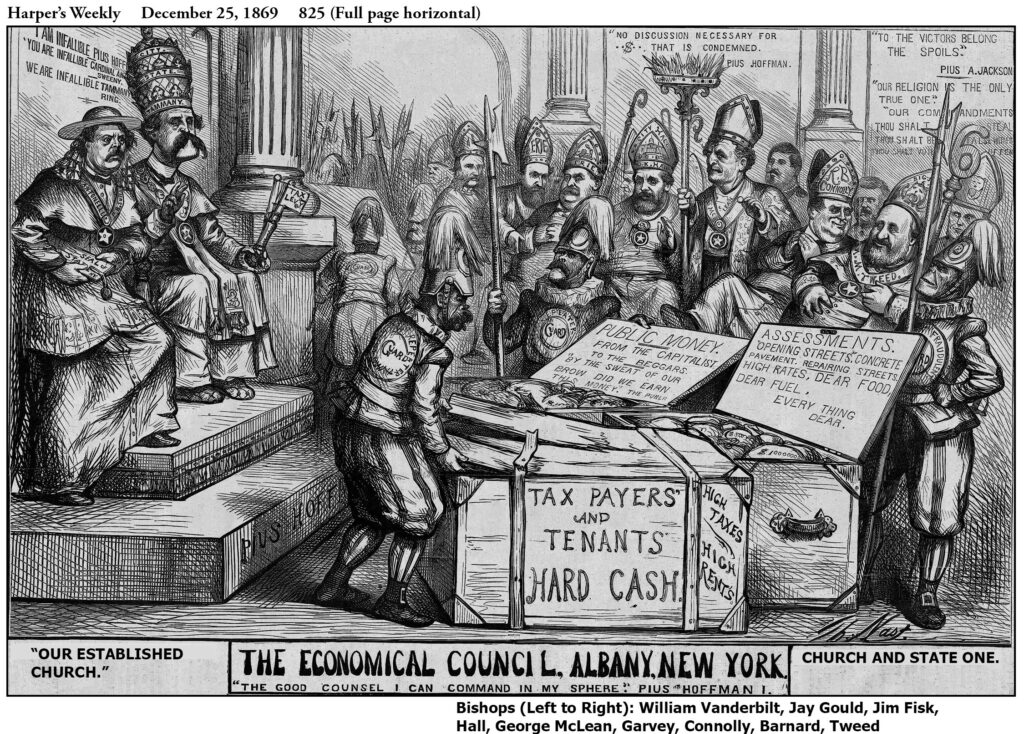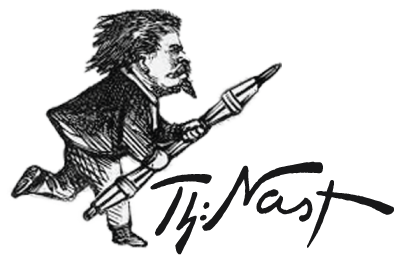
Harper’s Weekly – December 25, 1869
Here, Nast included all four principal Ring members for the first time. His Economical Council was all about money, not religion. Pius Hoffman I, wearing a Tammany papal crown and holding two “Tax Levy” golden keys, declared: “No discussion necessary for $ . . . that is condemned.” Next to him, Sweeny was labeled Cardinal Antonelli (papal Secretary of State). “Infallible” signs applied to Pope Hoffman, Cardinal Sweeny and the Ring. (Pope Pius IX had declared himself infallible earlier in 1869.)
The supporting cast of bishops were identified on their miters or vestments. Their religious commandments written on the wall behind Tweed were: “Thou shalt steal, bear false witness, and vote often. They all looked on as the two Irish guards — labeled “repeater” and “fraudulent” — opened the box of “taxpayers’ and tenants’ hard cash” for distribution to the Ring.
Nast’s insights and even clairvoyance were impressive. The man behind Connolly’s right shoulder was Andrew Garvey, the “Prince of Plasterers,” who took huge kickbacks for inflated construction, repairs and rent, and also served as front man for other illegal payments. What did Nast know almost two years before the Ring’s downfall when he included him here? He drew Garvey in shadow, probably implying he suspected but wasn’t sure. The other man in shadow was George Barnard, Tweed’s favorite conniving judge.
Crooked financiers Jim Fisk and Jay Gould were the key players in the “Black Friday” gold crash of three months earlier. They bought Tweed’s political support for their Erie Railroad (on their miters) stock manipulations, in which they bested Cornelius Vanderbilt and his son William (shown here) for control of the railroad.
